League of Legends – Ultimate Beginner’s Guide – Part Four: How To Play The Game
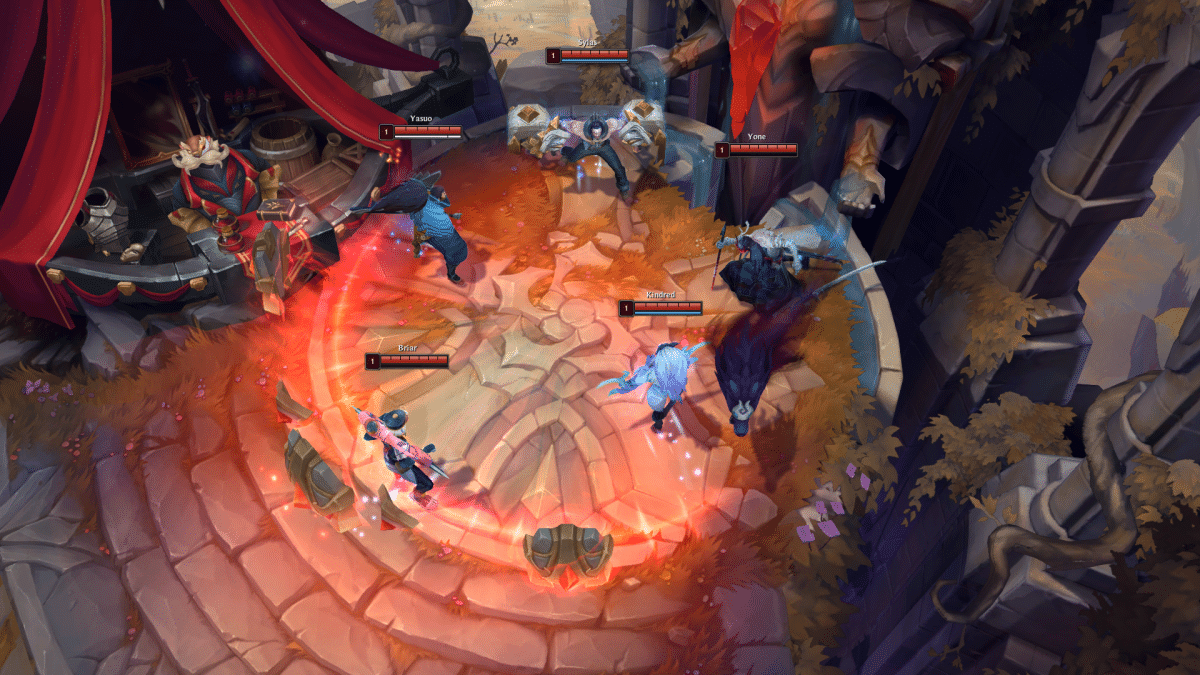
How To Play League of Legends (and preferably win)
So, you managed to follow the recommendations we laid out in Part 1, Part 2 and Part 3 of our Ultimate Beginner’s Guide to League of Legends. You picked a role, chose a champion that fits that role, and now you’re all ready to start.
This part is going to be about playing the game. It’s by far the longest part, as there is a lot of ground to cover, so prepare for a serious read.
To prevent you from running around like a headless chicken the moment the game starts, we’ve laid out the basic rules of the game below.
How You Win In League of Legends
The basic idea in League of Legends is as follows:
– You start out in your base
– You run to your lane (or jungle) and start killing the minions and monsters
– You start out dealing damage to the enemy turrets and Champions when the opportunity presents itself
– You earn gold and experience, you buy some items and you get stronger
– You start ganging up with your friends against the enemy Champions. They do the same to you.
– You go kill some epic monsters for the nice bonuses they give you
– You keep pushing the lanes until all the enemy turrets are down
– You take down the enemy Inhibitors so your base can spawn Super Minions
– Finally, you take down the Nexus, and you win
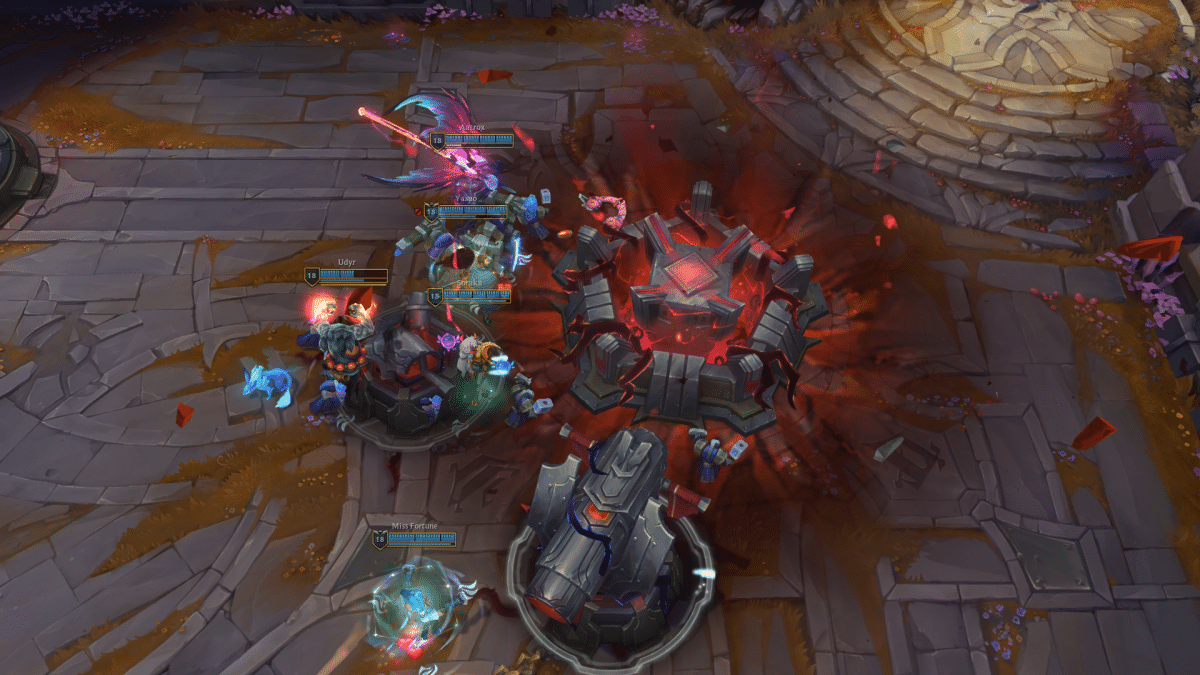
The Different Elements of a Game
During a game of League of Legends, you’re usually doing one the following three things: laning, jungling, or participating in teamfights. We’ll explain what each of these mean and tell you how to go about them.
Laning
First up is laning. Laning is the part of the game that takes up the most time and is the only thing that is really 100% required to progress towards victory. Everyone could just stay in their lane and keep pushing ahead, without anyone killing monsters in the jungle or all-out teamfights taking place. Everything would just move forward slowly, but steadily, until one of the teams advances far enough in one of the lanes to be able to take down the enemy Nexus.
That would be pretty boring, and it’s not what you’re going to experience during a game.
What usually happens is that one player goes to top lane, one goes to mid lane, two go to bot lane, and one player goes to the jungle.
Let’s leave the jungle player out of the picture for a moment, and talk about the guys in the lane.
As you know, each lane is defended by three turrets, which are big towers that can do a lot of damage and prevent you from reaching the enemy base. Especially in the beginning of a game, when you’re at a low level, you do not want to take on a turret by yourself. Doing so will result in a swift death, even without enemy minions or Champions nearby.
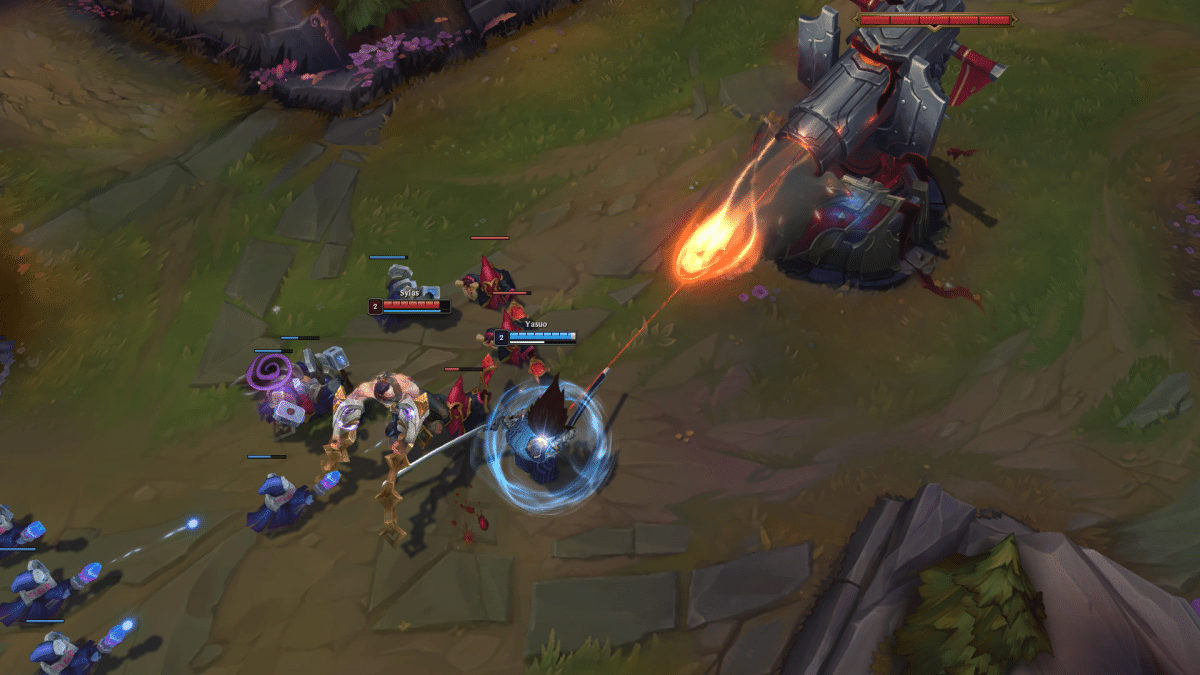
Still, taking down these turrets is going to be your main objective when youxx’re laning.
Luckily, you get a little help from the little minions that spawn in your base. These will march down the lanes, onwards towards certain death, readily giving up their life just so you can win the game. When you are laning, you want to let these minions attack the turret first, so it will target them instead of you. You can then attack the turret while it slaughters your allied minions.
Watch out though, because once the last minion is down, the turret will redirect its full attention towards you again.
Minions attack in waves, so once your minions are down, you’ll have to wait until the next wave arrives to start charging the turret again. Rinse and repeat until the turret is destroyed. Do this three times and you’ll arrive in the enemy base. All that’s left to do then is to take down the Inhibitor, which allows Super Minions to spawn. These put a lot of extra pressure on the enemy in that lane, because they can do a lot of damage and are pretty hard to kill.
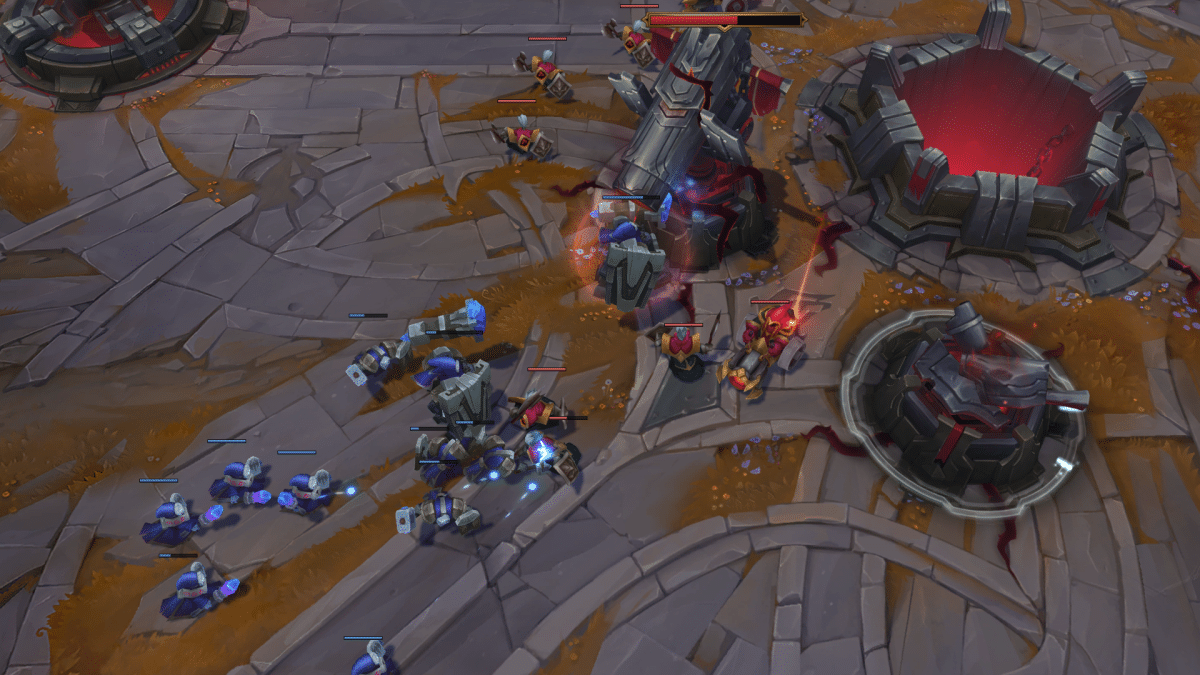
Once the Inhibitor is down, you can take down the two remaining turrets that defend the enemy Nexus. Then, finally the Nexus itself, allowing you to win the game.
Alas, this is not as simple as it sounds, because the enemy is trying to do the same to you. So while you’re going up and down the lane, enemy minions and Champions are also trying to attack your turrets.
At the same time, you need to be wary of the enemy jungler suddenly appearing to attack you from behind.
Both you and your enemy will constantly try to kill each other. Leveling up faster and getting more gold to buy items is crucial to gain the upper hand in a lane.
In essence, laning can be boiled down to two things: trading and farming.
In League of Legends, contrary to what it means in real life, trading does not mean the exchange of goods and services between you and your opponent. It doesn’t mean you’ll be buying his stuff in exchange for gold.
Trading means dealing damage to your enemy, knowing that you’ll likely take some damage back in return. It means that you’ll be exchanging blows. The goal then, is to just hurt the enemy a little bit more than he hurts you. You do this by either using your standard auto-attack, or one of your cool Champion’s abilities.
When trading, you need to keep out an eye for both your enemy Champion and his minions, as well as your own minions. If you have little backup and the enemy has a whole wave of minions taking you on, you might want to retreat just a bit and wait until your own wave arrives.
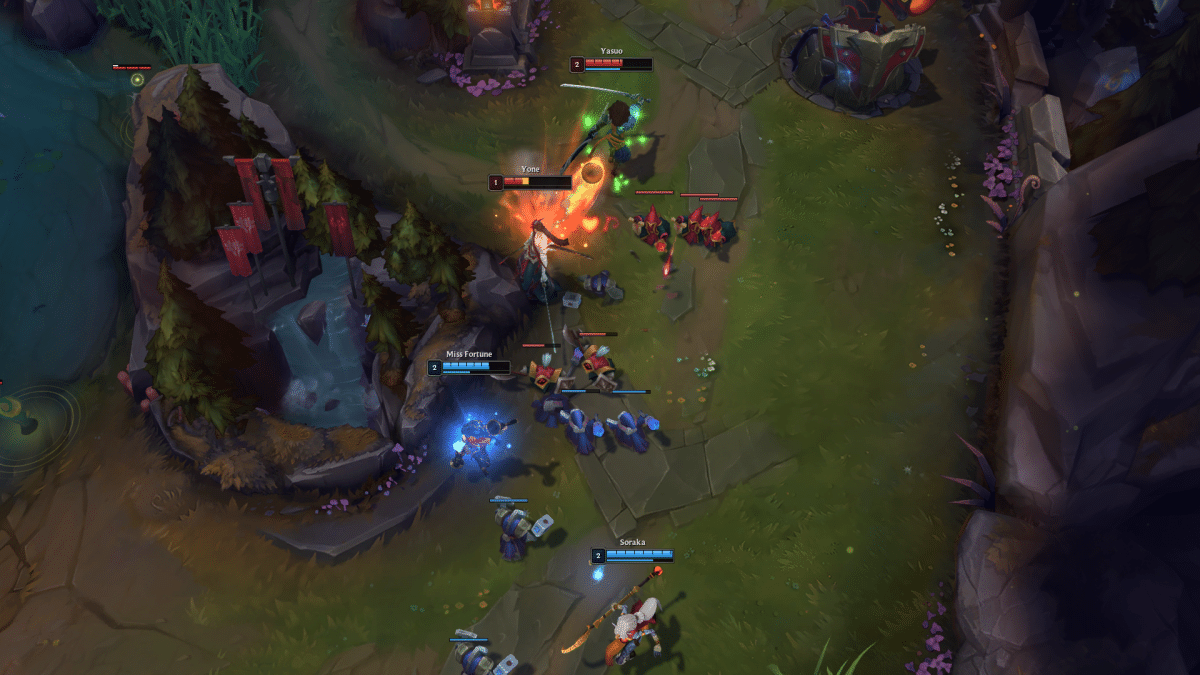
When attacking the enemy Champion during a trade, you also need to be aware of the fact that nearby enemy minions will start attacking you to defend their Champion. In the beginning, when you’re still relatively weak, you need to watch out for this and properly estimate the danger they pose in the situation you’re in.
When you start trading, be sure that it appears that the outcome will be favorable to you. Avoid attacking when there’s a lot of enemy minions and you seems at a disadvantage.
Farming, contrary to how it might sound, also has a different meaning in League of Legends. You won’t be planting seeds and raising livestock (if that’s what you’re looking for, go play Farming Simulator). Farming means killing enemy Champions and minions for gold and experience (in other words, you’re ‘farming gold and experience’).
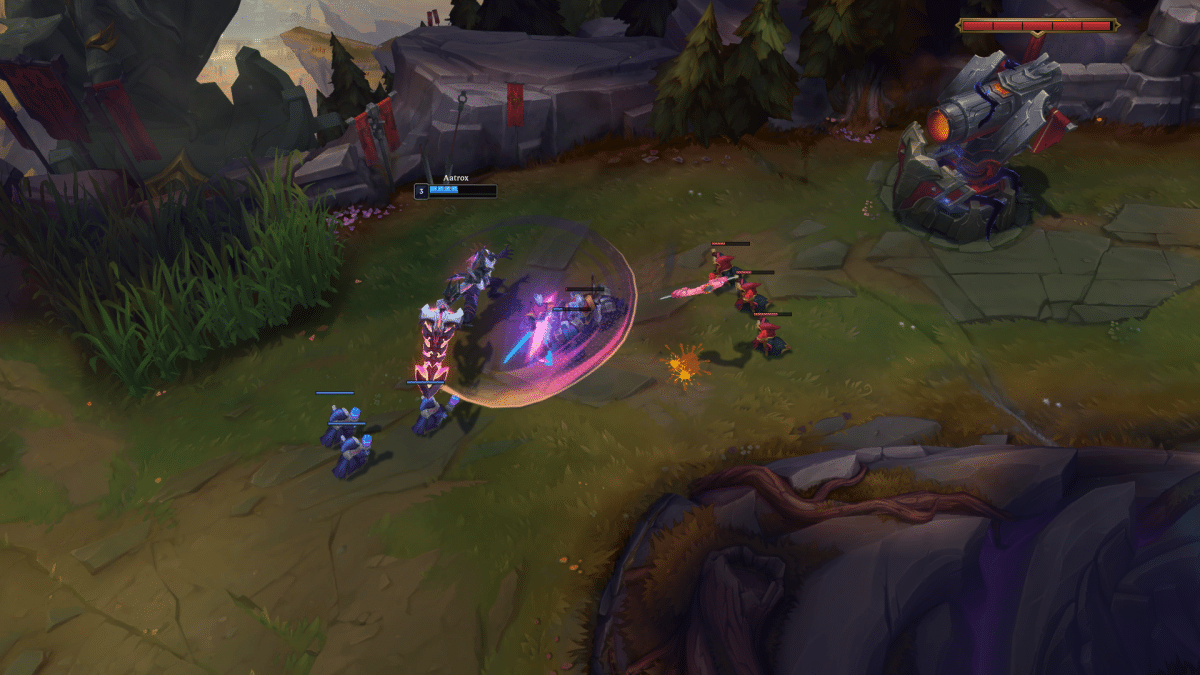
The importance of gaining experience is pretty straightforward: you gain experience to level up your character. Each time you level up, your stats (for example your attack power and your max health) increase. Each time you level up, you also get to choose a new skill or upgrade one of your existing skills. As you level up, you get a bit stronger.
Leveling up is pretty linear, though. Outside of the ability you select each level, you don’t have any say in how your stats improve.
Acquiring gold, on the other hand, gives you a bit more freedom in how your character evolves.
Gold allows you to buy items in the shop that is located in your base. The shop contains a variety of items that increase your skills in various different ways. You’ve got items that increase your movement speed, items that increase your attack power, items that grant lifesteal (which means every time you deal damage, you’ll be healed a bit), and many more.
You can choose which items to buy, depending on the build you’re aiming for. If you want a character that can deal a lot of damage, you’ll go for items that increase attack power and attack speed. If you want a character that can take a lot of damage and stay alive, you’ll buy items that increase your health and defense. You get the picture.
The difference between how gold and experience are acquired, is that gold is awarded to the player that scored the kill. Experience on the other hand, is shared between the players that are nearby the place that the kill was scored.
What this boils down to, is that even if you dealt the most damage to an enemy, you still won’t get any gold if your buddy deals the finishing blow. To get the experience from a kill, the only thing that matters is that you were in the neighbourhood when the finishing blow was dealt.
Jungling
Next up is jungling. Jungling, as you might have suspected, means going through the jungle area of the map and killing the monsters there to earn gold and experience for yourself. Once in a while, you’ll also move out of the jungle to help out a teammate one of the lanes that needs some assistance (which is called ganking).
The jungle is the space in between each lane. It’s separated in two halves by the river in the middle of the map, and again by the mid lane. This means the jungle basically consists of four quadrants:
- Blue Team Top Quadrant
- Blue Team Bottom Quadrant
- Red Team Top Quadrant
- Red Team Bottom Quadrant

Now, there’s all kind of stuff in the jungle you can kill. To start, there’s the enemy jungler, but also a whole range of different monsters. There are basic monsters and epic monsters. Each of them provides its own specific type of reward.
The normal monsters are:
- The Gromp
- The Blue Sentinel
- The Murk Wolves
- The Raptors
- The Red Brambleback
- The Krugs
Then, in the middle you have the Scuttlecrab, who walks in the river. This monster doesn’t fight back, and if you kill it, it creates a shrine in the center of the river that provides a field of vision around it, as well as a temporary speed boost to Champions that move through it.
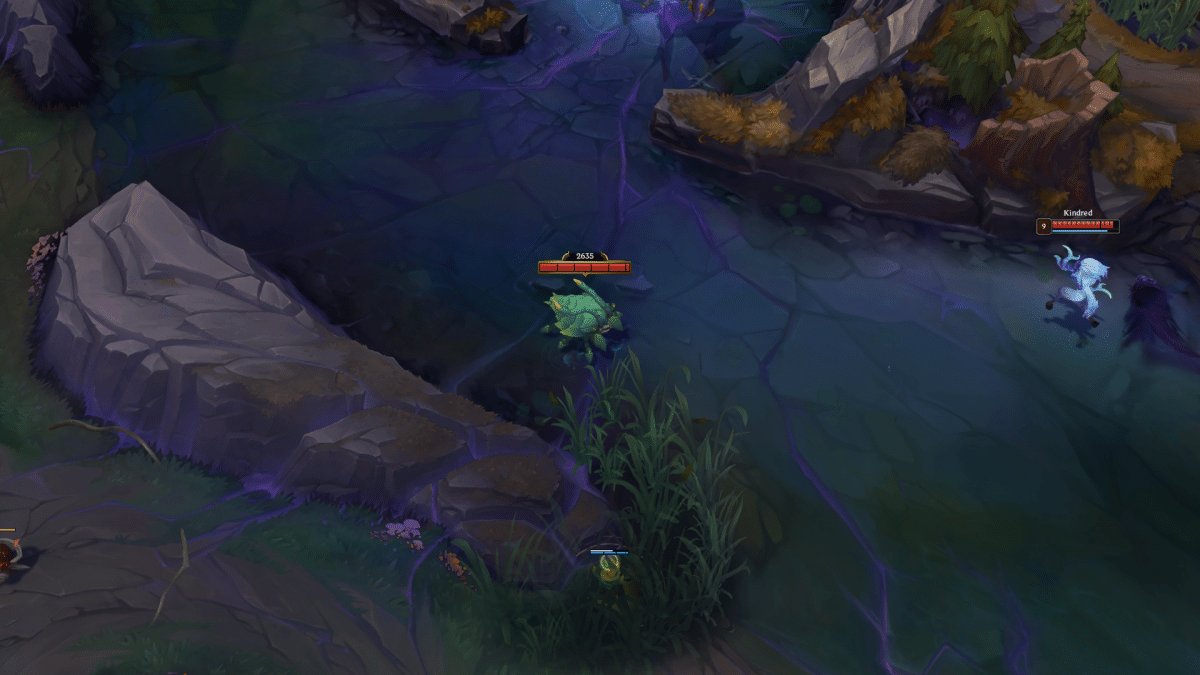
Besides the smaller, normal monsters, there’s the epic monsters, strong monsters that confer powerful bonuses to the team that kills it. Ignoring these objectives could cost you the game, they’re really important.
At the moment of writing, there are five major epic monsters
- The Drakes (elemental dragons)
- The Voidgrubs
- The Rift Herald
- Baron Nashor
- Atakhan
Because these epic monsters are so crucial in a match, it would be negligent of us not to explain them to you in-depth. Here goes.
The Elemental Drakes
The Elemental Drakes are dragons that spawn one at a time in the Dragon Pit, which is located near the middle of the bot lane.
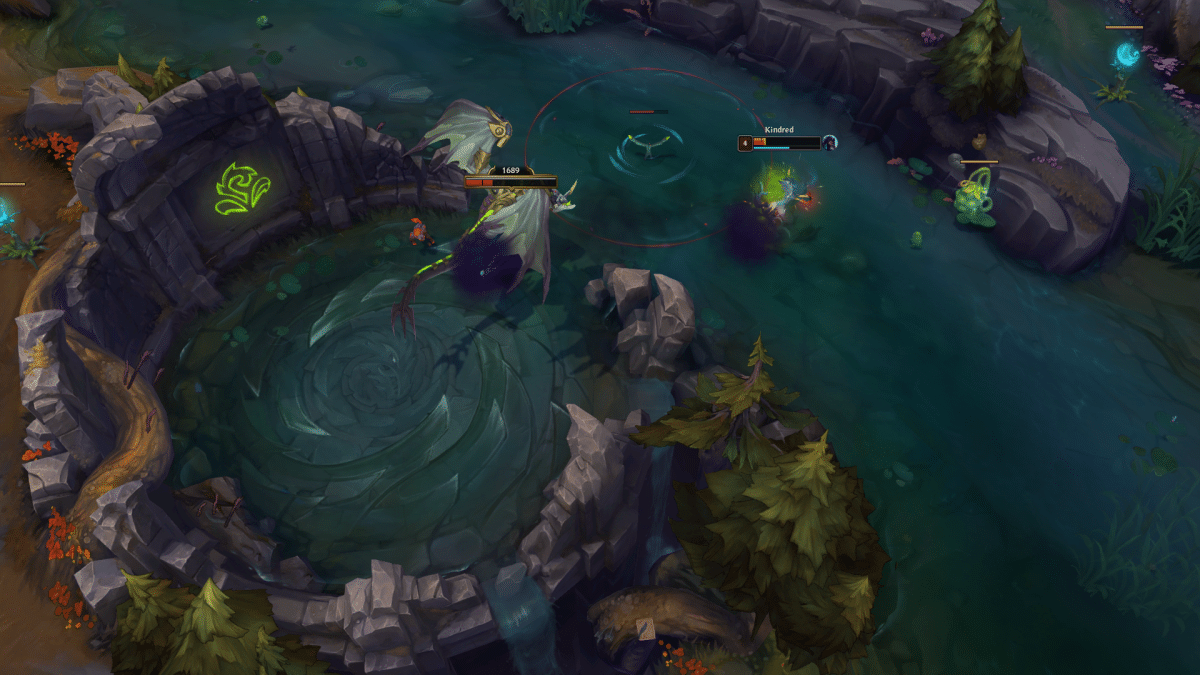
Each time you kill a Drake, your team receives a stack of Dragon Slayer, which provides a team-wide bonus.
There are six types of Drakes, and each type confers its own bonus when killed. These bonuses are permanent, so they provide an upgrade to the entire team for the rest of the game. Not something you’d want to miss out on, since they can tip the scales of the game to your advantage. But the same goes for the enemy team, so if they get the kill instead, they’ll become stronger, and you’ll be in trouble.
The Infernal Dragon provides bonus Attack Damage and Ability Power.
The Cloud Dragon provides bonus Slow Resistance and Movement Speed.
The Mountain Dragon provides bonus Armor and Magic Resistance.
The Ocean Dragon provides bonus Health Regeneration.
The Hextech Dragon provides bonus Ability Haste and Attack Speed.
The Chemtech Dragon provides bonus Tenacity, Heal Power and Shield Power.
Besides these individual bonuses, you can also obtain the Dragon Soul, which is obtained by the team that is able to obtain four stacks of Dragon Slayer first. Basically, that means you have to kill four Dragons to get this bonus. The Dragon Soul confers a bonus that is determined by the Element of the map. The Element of the map is determined by the element of the third Dragon that spawns in the game. (We know, it’s complicated…)
Finally, there’s also a seventh type of dragon, the Elder Dragon. This Dragon only spawns once a team has obtained a Dragon Soul. When killed, it provides the buff ‘Aspect of the Dragon’. This bonus allows you to deal extra ‘true damage‘ when attacking enemies. When dealing damage to an enemy below 20% health, they are killed instantly. However, Aspect of the Dragon is not a permanent buff. It lasts for 150 seconds or until you die.
The Voidgrubs
A second type of ‘epic monster’ are the Voidgrubs. Three of these spawn in the Baron Pit, five minutes into the game. They also spawn Voidmites every 12 seconds. Each of these Voidgrubs can respawn once per game (so in total you can kill six of them per game).
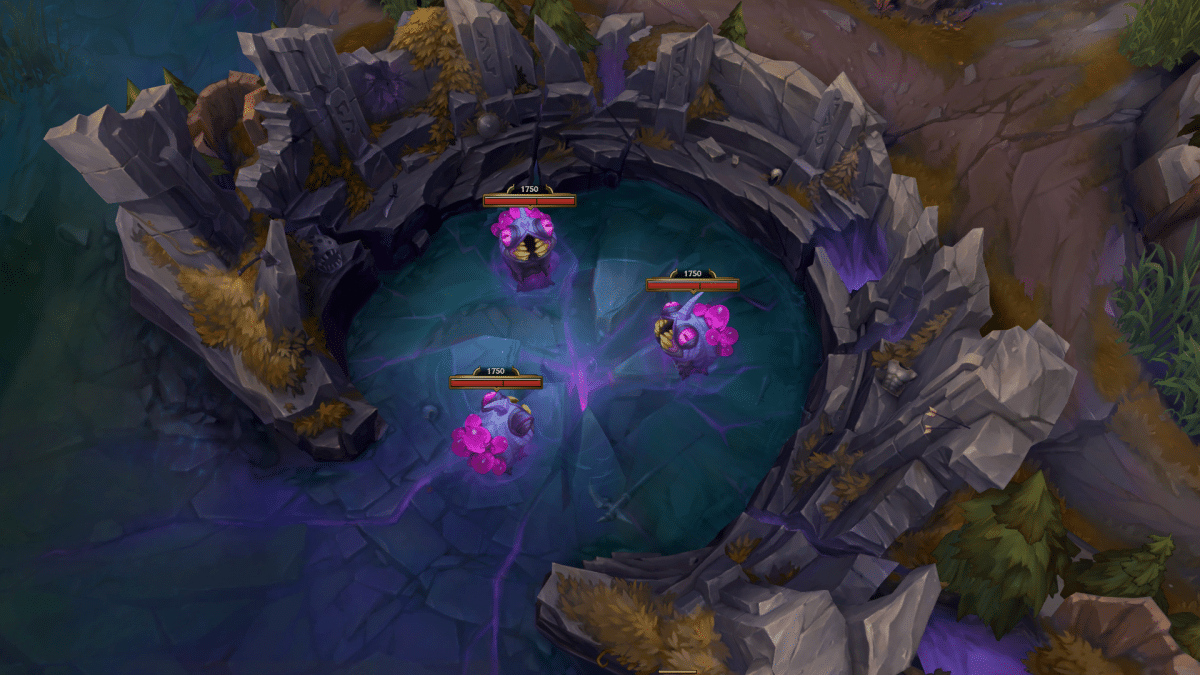
Killing a Voidgrub nets you a decent amount of gold and experience, but killing a Voidgrub also provides a stack of ‘Touch of the Void‘ buff to each of your team members. This buff allows you to deal additional damage to enemy buildings.
Additionally, acquiring 4 stacks of ‘Touch of the Void‘ grants a stack of ‘Hunger of the Void‘, which allows you to summon Voidmites that can attack enemy structures. Getting all 6 stacks of ‘Touch of the Void‘ grants you another stack of ‘Hunger of the Void‘.
The Rift Herald
The Rift Herald is another powerful epic monster. It spawns in the Baron Pit at 14 minutes into the game.

When the Rift Herald is killed, it drops an item called ‘Eye of the Herald‘. This item can only be picked up by a member of the team that killed it. The Eye of the Herald allows you to summon the Rift Herald as an ally in battle.
The Eye of the Herald also grants the buff ‘Glimpse of the Void‘ to all team members that assisted in killing the Rift Herald. This grants one use of Empowered Recall.
If you use the Eye of the Herald, it will spawn the Rift Herald as a mercenary ally. When summoned, it will move to the nearest lane and will start going down that lane, towards the enemy base, and clear everything in its path.
The Rift Herald will attack minions and structures such as turrets and inhibitors. When it kills something, the gold that is earned will be granted to its summoner and the team members that helped take down the Rift Herald.
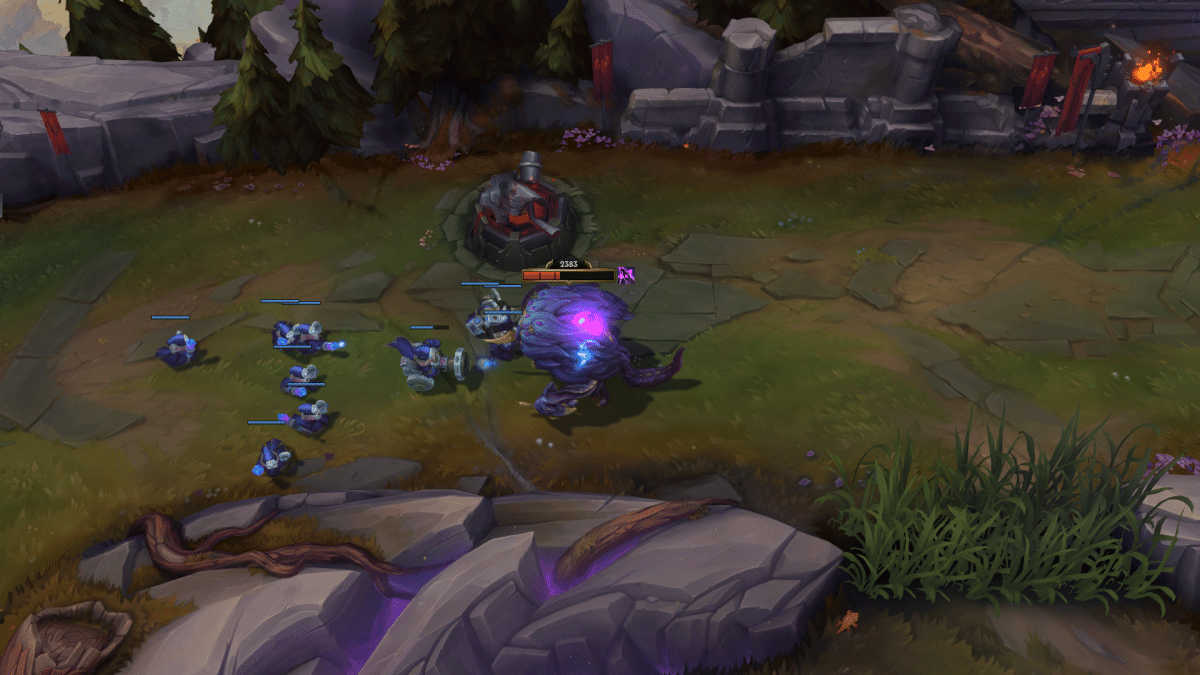
You can also ride the Rift Herald to charge in a chosen direction. This charge deals significant damage to everything in its path. However, crashing into something also does a large amount of damage to the Rift Herald itself.
If the Rift Herald isn’t killed by 19 minutes and 45 seconds into the game, it despawns to make way for Baron Nashor.
Baron Nashor
Of all the monsters that spawn in the game, Baron Nashor is probably the toughest mofo of them all. This monster spawns at 20 minutes into the game, in the Baron Pit (obviously).
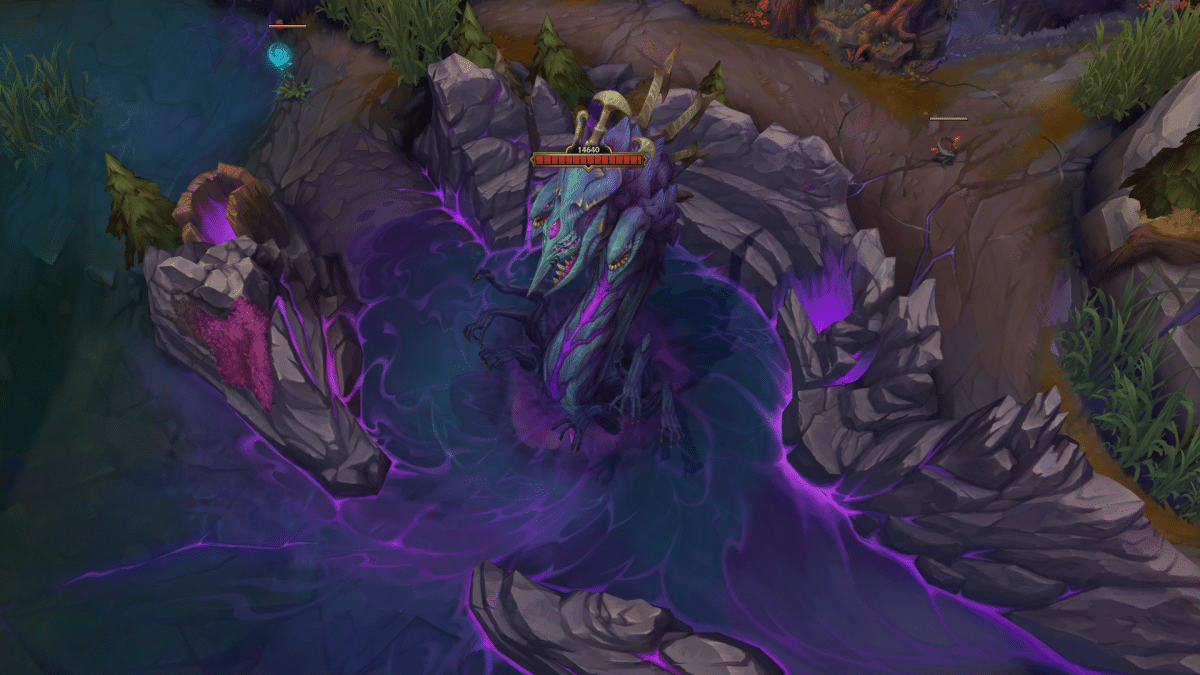
Baron Nashor spawns in 1 of 3 different forms, chosen randomly:
- Hunting Baron
- Territorial Baron
- All-Seeing Baron
Each of these forms has slightly different abilities. The different forms also change the terrain around the Baron Pit slightly. We won’t go into detail about this, as this goes beyond the scope of a simple Beginner’s Guide, and the differences don’t matter that much anyway.
Killing the Baron nets you the buff ‘Hand of Baron‘, a buff that lasts for 180 seconds. This buff provides bonus Attack Damage, Ability Power and creates an aura around the teammates that makes nearby allied minions stronger. It also grants you Empowered Recall, which allows you to recall to your base in 4 seconds instead of 8.
We recommend you don’t take him on by yourself, especially if you’re still at lower levels. Be sure to take him on with at least one or two of your teammates.
After Baron Nashor is defeated, he will respawn again after 6 minutes. The form he spawns in will also be the same for the rest of the game.
Atakhan
Last but not least, we’ve got Atakhan. This is a recent addition to the epic monster list. He was introduced in 2025.
A pit will spawn at 14 minutes into the game. This pit will either be near the top or near the bot lane, depending on which part of the map has seen the most action (kills). Atakhan will then spawn at 20 minutes into the game.
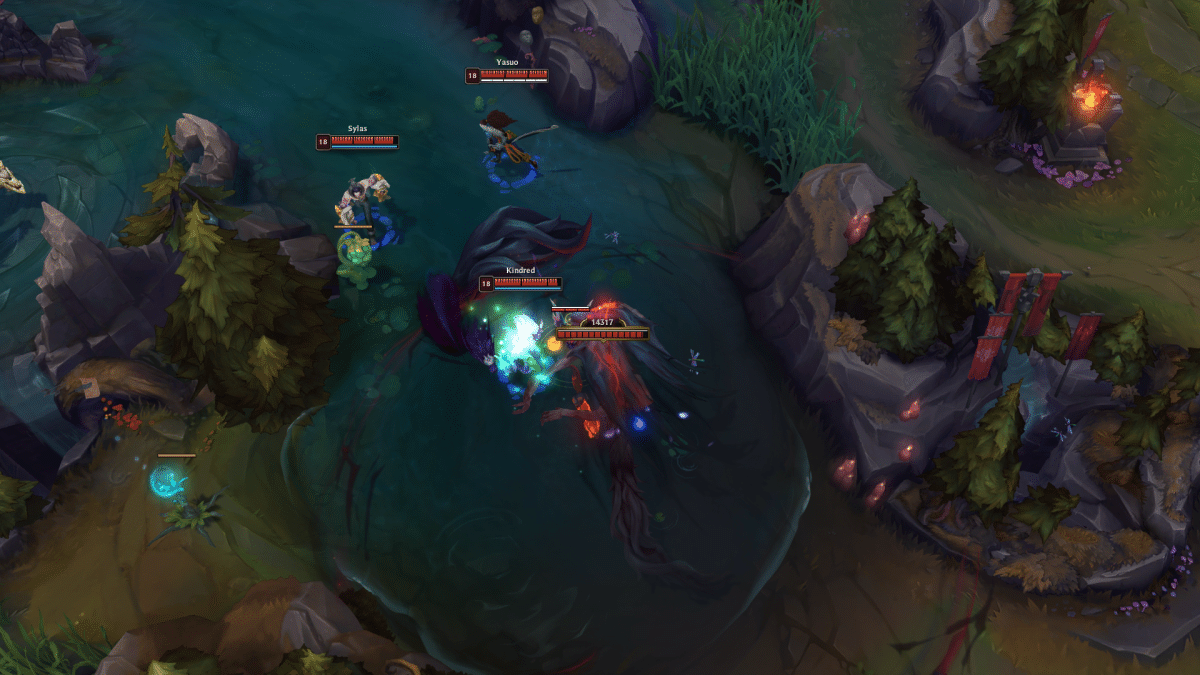
Atakhan can spawn in one of two forms, Ruinous Atakhan or Voracious Atakhan. Ruinous Atakhan will spawn in games that haven’t seen much action. Voracious Atakhan will spawn in games with a high amount of action (in terms of Champion deaths). Each form has its own attack pattern.
The rewards you get for killing Atakhan depend on the form as well.
Killing Ruinous Atakhan grants you the following rewards:
- You will receive 6 stacks of Bloody Petals. A field of Blood Roses will also spawn, which grant extra Bloody Petals when picked up. This gives you experience and Adaptive Force. Adaptive Force is a buff that provides either bonus Attack Damage or bonus Ability Power, depending on which of these is currently the highest in your character. Bloody Petals are a permanent buff. The more Bloody Petals you have, the higher your Adaptive Force bonuses. However, the bonuses decrease for each stack of Bloody Petals.
- You will also receive Crown of Carnage. This provides a 25 % buff on other epic monster buffs you have acquired. This is applicable on bonuses gained from Voidgrubs, the Rift Herald, Drakes, and Baron Nashor.
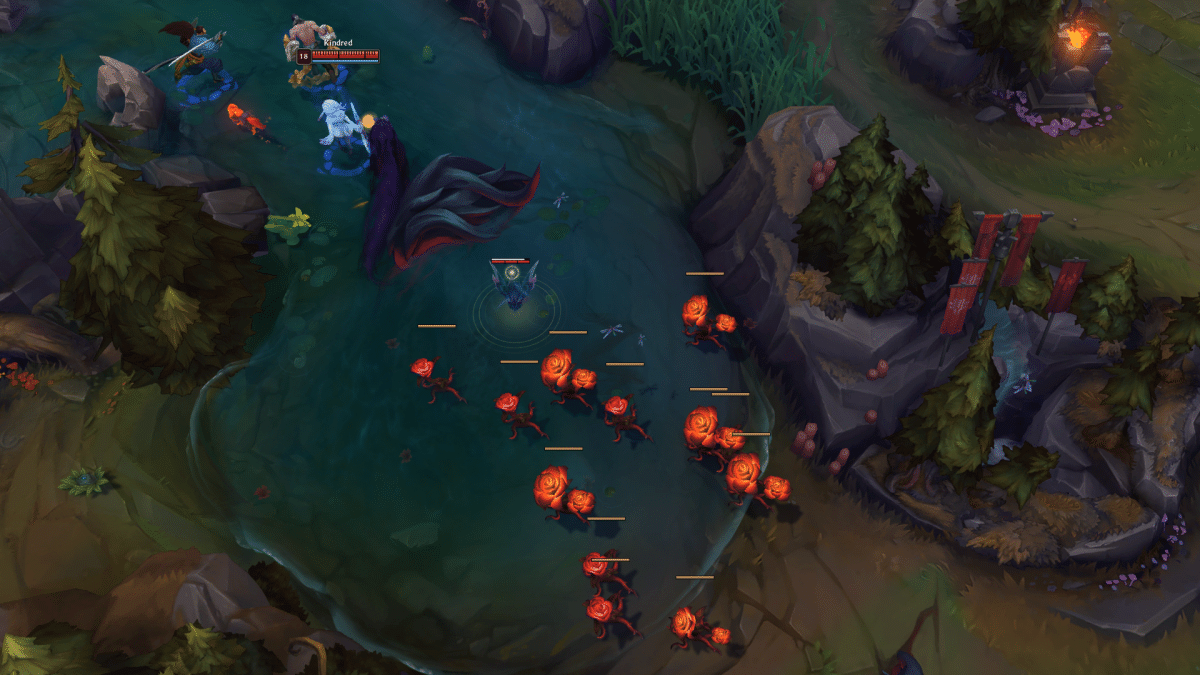
Killing Voracious Atakhan in turn provides:
- False Life: the next time you are killed, instead of actually dying, you will be teleported back to your base. This buff only lasts 150 seconds, so if you plan on dying, do it fast.
- False Life (gold): you get 25 bonus gold for each Champion you take down. This also ends after 150 seconds or after you trigger your False Life by getting killed.
Teamfights
Another big part of League of Legends are fights between Champions of different teams. These usually start occuring once the Champions have leveled up a bit and achieved a decent set of gear, as you’ll start doing more damage and can also take more damage.
Attacking and killing enemy Champions can net you a decent amount of gold and experience. Taking down an enemy also gives you an advantage in the game, as it takes a while for them to respawn. This gives you the chance to take down turrets that are now undefended. The respawn time increases as characters gain levels.
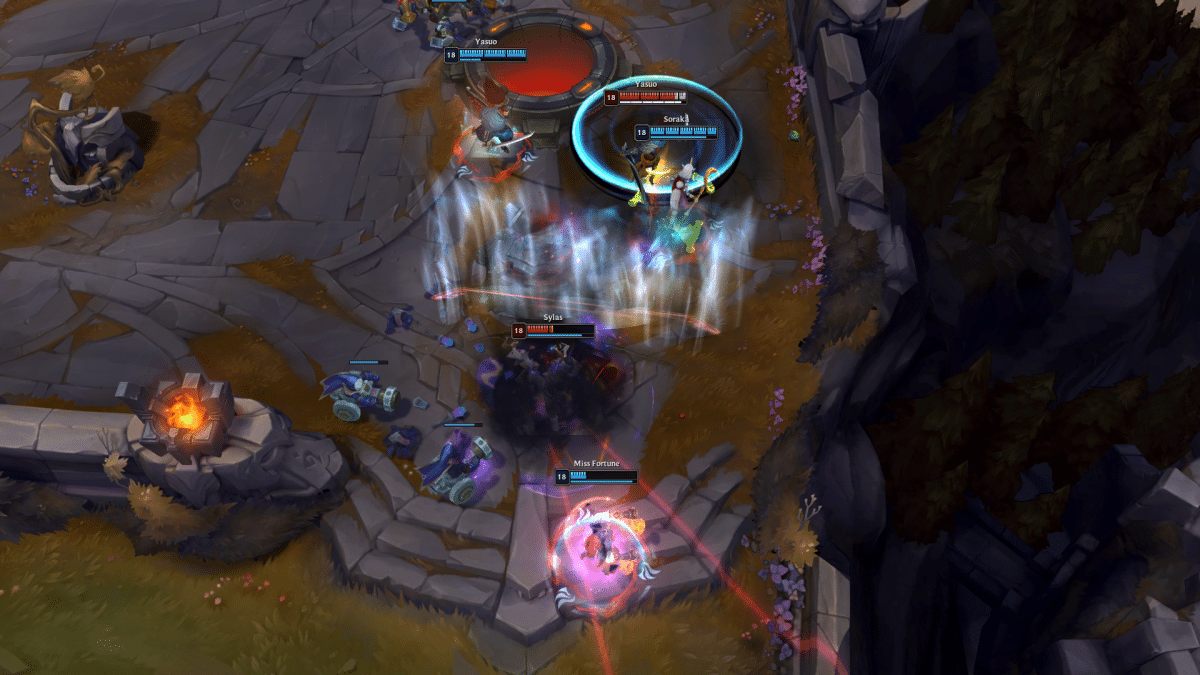
In the beginning, getting killed isn’t that big of a deal, since you’ll be back in the game in no time. However, if you’re killed at a higher level, it can take up to a minute or more before you’re allowed to fight again. This gives your opponents the opportunity to do a lot of damage.
In later parts of the game, you’ll often see big teamfights between multiple Champions of each team. These can get a bit chaotic, so be sure you know what you’re up against when you engage in battle.
The Different Phases of a Game
The gameplay in League of Legends stays the same during the entire game. However, you’ll notice different ‘phases‘ as the game goes on. These aren’t ‘official phases’, but patterns of gameplay that emerge as the game goes on, characters become stronger and monsters start spawning.
Early Game – Earn An Honest Wage
The early game is also known as the ‘laning phase’. This takes place in the first 15 minutes of the game. In this phase, Champions are still pretty weak, and can get hurt pretty bad from just taking on too many minions. At the same time, your opponent is trying to trade with you and deal some damage. This means you’ll have to be careful. The main objective of this phase is just to farm and gain experience and gold, so you can get stronger and buy better items.
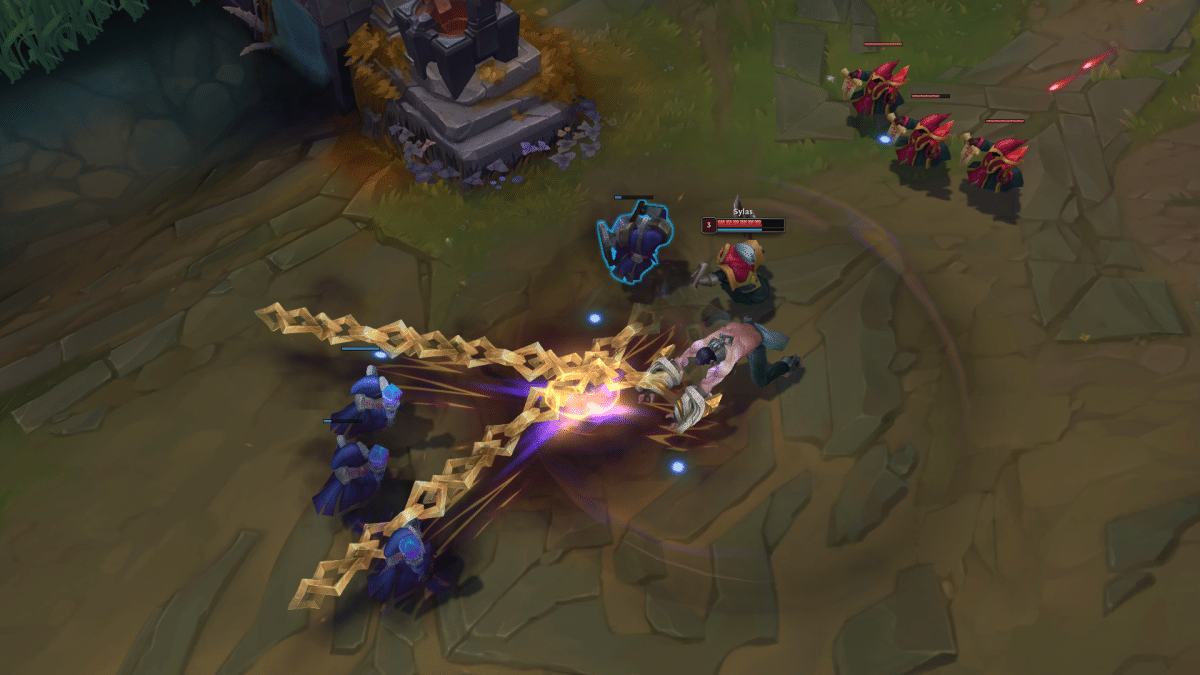
Things to focus on in early game:
- Farm minions efficiently to gain gold and XP
- Trade damage with enemies to establish lane dominance
- Control vision with wards (prevent ganks, secure river control)
- Coordinate with your jungler for objectives and ganks
- Secure first turret or first blood for a gold advantage
What you should do in early game also depends on your role:
- Top Lane: Focus on farming and trading. Ward against jungle ganks. Play safe if your champion scales later.
- Mid Lane: Prioritize lane control, roam to side lanes when possible, and help with jungle fights.
- Bot Lane (ADC & Support): Farm and poke enemy bot laners.
- Jungle: Secure early Scuttle Crabs, track the enemy jungler, and gank lanes to create pressure.
In this phase, you can also try taking on a few Dragons as well as the Voidgrubs.
Mid Game – Get Rich or Die Trying
Mid game starts at about 15 minutes into the game. At this point in time, you’ll have gained a decent amount of gold and experience. If you have spent your gold wisely, you’ll have some nice stat boosts that make you a lot more dangerous to the enemy. Turrets also become more vulnerable due to the Turret Plating falling. This speeds up the pace of the game, as it becomes easier to break through a turret. You’ll also start to see some teamfights.
Objectives to focus on.
- Destroy outer turrets to open up the map
- Rotate as a team to secure Dragons, Rift Herald, and Baron vision
- Group for fights but don’t overforce fights you might lose
- Look for picks (catching someone out of position)

As for the things you should focus on depending on your role:
- Top Lane: Split-push if your champion is strong in 1v1 fights (e.g., Fiora, Jax), but join fights when needed.
- Mid Lane: Start roaming and shadowing your jungler for picks. Clear vision and apply pressure.
- Bot Lane (ADC & Support): Rotate mid after taking the bot turret. Stay safe and position well in fights.
- Jungle: Control objectives and set up vision around Baron and Dragon before they spawn.
In mid-game, the other epic monsters also start appearing. Once you’re strong enough, be sure to take down the rest of the Dragons, the Rift Herald, Baron Nashor and Atakhan if you see an opportunity arising. This will give you those sweet buffs that help you dominate the game.
Late Game – Finish The Fight
About thirty minutes into the fight, all the Champions are usually near their maximum level. This allows you to push through turrets pretty fast. Teamfights will increase in frequency. You’ll want to make sure you win them, because the long respawn times in this phase can decide a fight. This is especially true if a few of your other teammates were also killed.
In late game, one of the teams will inevitably take down one of the opposing team’s Inhibitors. This causes the Super Minions to spawn in that lane, creating extra pressure there. You’ll also be able to finally buy the best items, and this is when your Champions become crazy powerful. This is the fun part, which unfortunately usually doesn’t last very long.
What the team should focus on in the end game:
- Control Baron Nashor and Elder Dragon (they can decide the game)
- Stick together to avoid getting caught alone
- Look for picks and win a fight before sieging towers
- Use Baron-empowered minions to push lanes and end the game
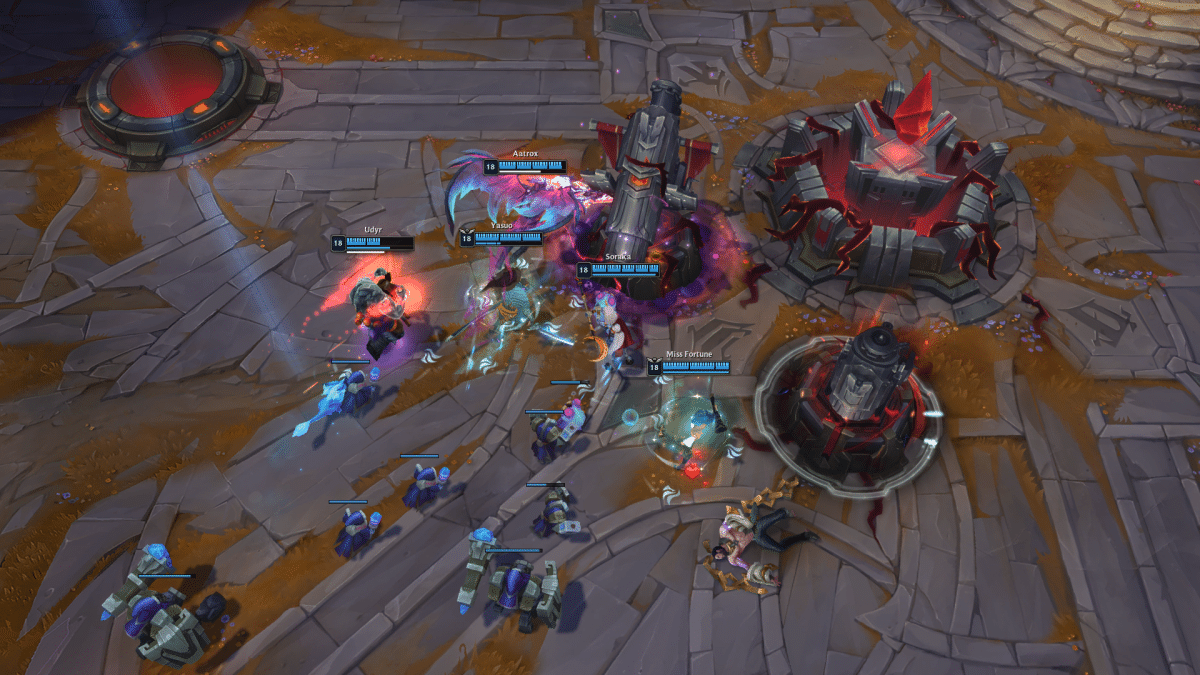
Depending on your role, you should focus on the following:
- Top Lane: Continue split-pushing if ahead, but group for Baron fights.
- Mid Lane: Help control vision and poke before fights. Focus on enemy carries in fights.
- Bot Lane (ADC & Support): Position safely. If the ADC dies, the fight is usually lost.
- Jungle: Smite control is crucial. If the enemy jungler is dead, secure objectives safely.
The most important thing you have to remember for late game: one team fight can end the game.
Final remarks – GLHF
Finally, we’ve come to the end of our Ultimate Beginner’s Guide to League of Legends. I hope all this information has given you a good idea of what to do. League of Legends can be pretty confusing for newcomers, as there is a lot going on.
As you become more experienced, we hope you will be able to kick some serious ass. Good luck, and most of all, have fun.

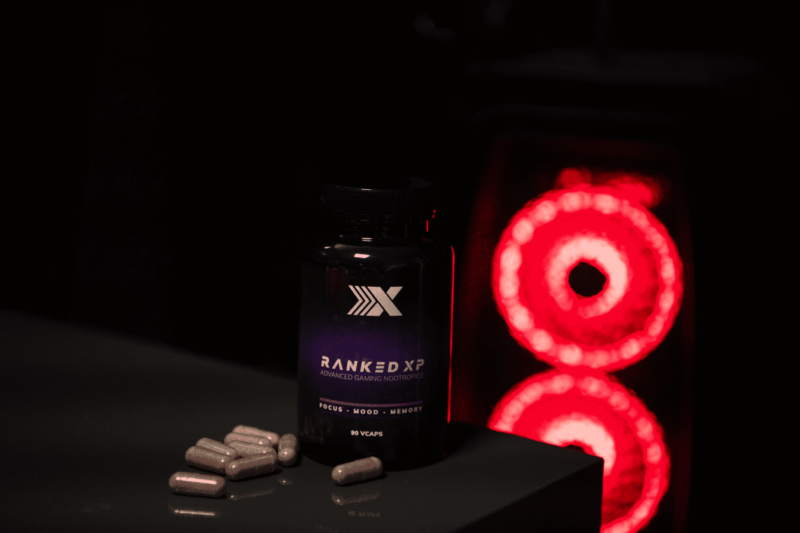
It’s time for you to join the elite
Level up your mind with our powerful nootropic designed to upgrade your gaming skills.
